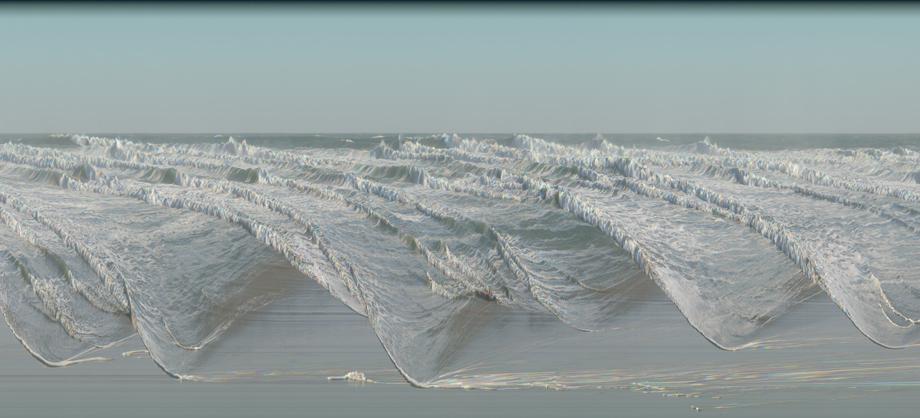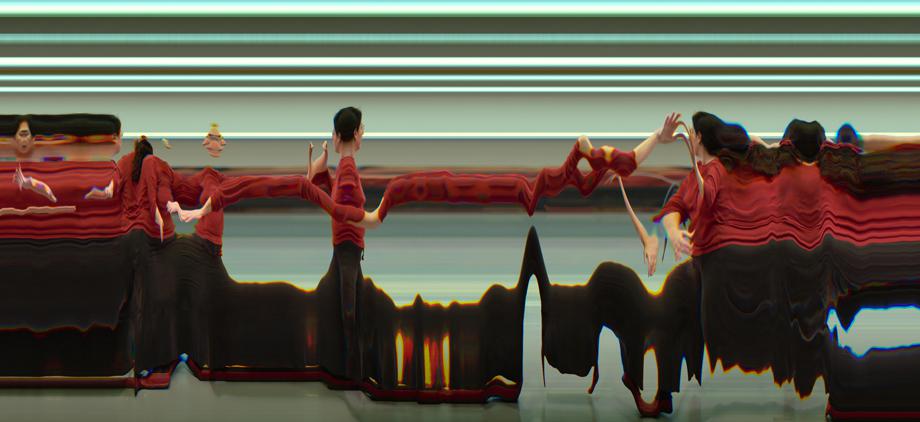The abstract-seeming images here are not the result of some wacky Photoshopping. Jay Mark Johnson’s photos are actually incredibly precise. The reason they look like this is because he uses a slit camera that emphasizes time over space. Whatever remains still is smeared into stripes, while the motion of crashing waves, cars and a Tai Chi master’s hands are registered moment by moment, as they pass his camera by. Like an EKG showing successive heartbeats, the width of an object corresponds not to distance or size, but the rate of movement. Viewing the left side of the picture is not looking leftward in space but backward in time

Jay Mark Johnson.
Yes, it’s a confusing concept. Johnson—an architect, painter, political activist, cinematic special-effects designer, and student of cognitive sciences—probably would not have come up with the idea, himself, were it not for a chance discovery. He had purchased a $85,000 rotating slit-scan camera for high-resolution panoramas. (The camera records vast landscapes sliver by sliver.) Finding the accidental effects of motion in front of the camera strangely poetic, he experimented with stopping the rotation and honing in on one tiny area. These images are the result.

Jay Mark Johnson.
This unique look is possible because the fixed-position slit camera registers only a vertical sliver of a scene. Whatever passes that slit by gets registered in a narrow line. Over a period of time, which Johnson can control, it registers line after line. The final result is a bunch of these lines all pushed together. (In this sense, you could say each photograph is actually a composite of hundreds of very skinny images.)
If you are still having trouble with this idea, try cutting out a tiny slit of paper and holding it up to your eye. Then watch something move by that slit, imagining that you are able to record what you see every half a second and line all those recordings up in a rectangle. A car taking a long time to pass the slit is stretched; while a car speeding by is scrunched up. One flitting dancer can fill a panorama.

Jay Mark Johnson.
The way the camera isolates subject from background allows Johnson to evoke the mood of an empty piazza painted by De Chirico or the sense of estrangement and abandon depicted by Sartre.
He says he opts for this unusual camera because he wants to hold a mirror to human nature, that expands our view of reality. As he explained, “It shows us that what we see is a product of our cultural traditions and means of perception.”
It is mind-blowing to think that something so seemingly surreal is actually just a different, but incredibly accurate, way of processing reality.

Jay Mark Johnson.

Jay Mark Johnson.
More Photo Features You May Enjoy
A Stranded Photographer Who Survived for a Year on Penguin Steaks
